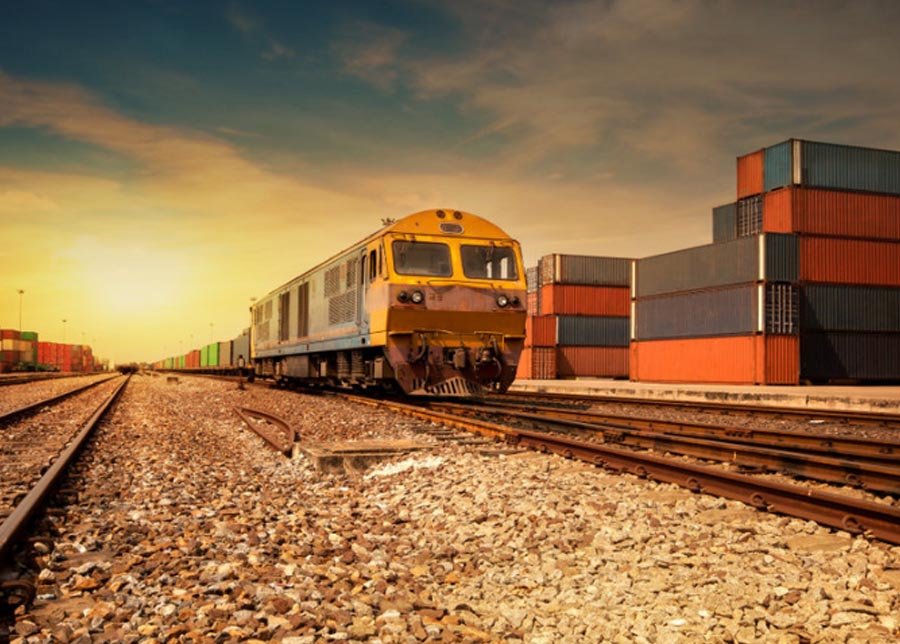Intermodal transportation is a term encompassing the use of different modes of transportation to move goods from one point to another. It offers businesses and customers greater flexibility than traditional single-mode transport.
Think of it as combining the efficiencies of various means of transporting goods to consignees. You may also check out MX Solutions homepage and learn more about how you can leverage their intermodal freight services, including their established contracts and networks.
Intermodal transportation utilizes standardized shipping containers, allowing shippers to maximize various modes of transport without needing to handle or repackage goods. It also makes it easier to consolidate freight from multiple sources and destinations.
Thus, a supplier can pack goods at the point of origin, ship them, and deliver them to their consignee without delays – as it involves fewer hands. Plus, freight handlers can quickly transfer these robust steel containers between different modes of transportation. So, what are the four types of intermodal transportation shippers generally use? Well, this transport chain comprises the following:
Table of Contents
1. Trucks
Trucks facilitate cargo transfer between transport methods, such as planes, trains, ships, and other trucks. For instance, a rail-to-truck transfer involves loading cargo from trains to trucks for delivery. Similarly, a shipper may load goods onto a truck and transfer them to a train for dispatch to a distant sea or airport.
Common examples of cargo transported by trucks include vehicle parts; pharmaceuticals; frozen goods such as fish; produce from farms; construction equipment; building supplies; household furniture, and items to be delivered to customers from rail stations (the final leg of the transportation journey). Hence, trucks are an integral part of the shipping chain, ensuring prompt delivery of goods to their destinations.
Road transport connects different parts of the transport network. For example, trucks may carry goods from one train station to another or load cargo onto a vessel for shipment overseas. Also, the flexibility of trucking makes it an ideal option for both short- and long-haul freight.
2. Rail
Trains are the backbone of many intermodal freight services, providing efficient and cost-effective solutions for transporting goods over long distances. Rail transport is especially suitable for bulky items such as timber and raw materials, building supplies, minerals, and hazardous materials. Aside from being one of the most cost-effective options for moving goods, it offers higher safety standards than road transport.
Nonetheless, for an intermodal system involving rail to work, shippers use specialized containers or modify existing containers to accommodate the dimensions of freight cars. That way, once the cargo is loaded onto a train, it’s transferable to other modes of transport. For instance, goods destined for sea transport can be shipped from a rail station to a truck and from there to the port. And generally, the rail leg usually uses one of two types of railroad cars:
- Container-on-flatcar (COFC) – designed to carry multiple stacked containers. A well-car can accommodate up to four containers at a go, helping to reduce transport costs.
- Trailer-on-flatcar (TOFC) – allows for shipping large trailers on a flatcar. In other words, shippers place over-the-road trailers (OTR) on well-cars, allowing trucks to take over later and deliver goods to the consignee.
3. Sea
Sea freight is an age-old method used in intermodal transportation and remains the most common option for moving goods. Ships handle vast amounts of cargo and are perhaps the most economical option for transporting goods over vast distances.
Picture this: you manufacture products overseas and must ship them directly to customers or retail outlets. First, you need to move your cargo from the factory to an ocean port – this may involve rail or road transport(trucking).
Then, the goods embark on the second or third leg of their journey by ship. And once they reach the destination, you may require other modes (a truck) to get your products to your consignees. In short, your intermodal chain may include the following combination: truck-rail-sea-truck.
4. Air
Have a time-sensitive shipment you need to get to its destination urgently? Consider air transport. Items such as pharmaceuticals and fresh produce require fast delivery, making air freight ideal. While it may be expensive compared to other modes of transportation, it’s the quickest way to get products and items to overseas locations. Nonetheless, you may still need trucks to complete the final leg of the journey.
A combination of the four transportation methods mentioned above can help get products to the intended destination on time and efficiently. Intermodal transportation leverages the best of all transport modes, helping to reduce costs, enhance safety, streamline shipping operations, and offer reliable capacity. Even so, the onus is on the shipper or their service provider to pick the most appropriate mix of transportation methods for a seamless logistics experience.










